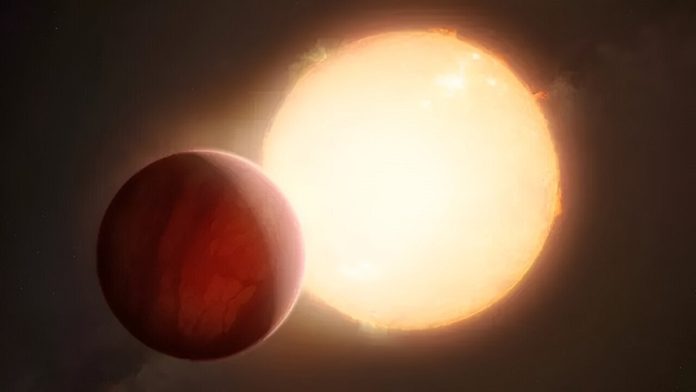
A team of researchers led by Lund University in Sweden has discovered a small planet with unusual behavior that challenges what scientists know about planet formation.
This planet, called TOI-1408c, is located 455 light-years from Earth and has a mass eight times that of our planet.
What makes it truly fascinating is how it moves around its star.
TOI-1408c orbits very close to a much larger planet, a hot gas giant known as TOI-1408b.
When the researchers started studying both planets and their star, TOI-1408, they noticed something strange.
The small planet’s orbit doesn’t follow the usual pattern seen in most planets. Its movement is more like a “shimmy” or dance, with variations in when it passes in front of its star.
“This small planet shows a very unusual way of orbiting, which isn’t something we see often. It even changes the timing of its transit around the star,” says Judith Korth, an astrophysicist at Lund University and the lead author of the study.
“This challenges our existing ideas about how planets and their systems are formed and stay stable.”
The discovery is important because it offers a rare glimpse into how planetary systems might form and evolve, especially when a small planet is so close to a much larger one.
Understanding TOI-1408c’s strange behavior could help scientists learn more about how planets develop in other star systems, especially when giant planets are involved.
Since the first confirmed discovery of an exoplanet in 1995, scientists have found over 5,700 planets outside our solar system, called exoplanets.
The discovery of TOI-1408c was made possible by NASA’s Transiting Exoplanet Survey Satellite (TESS), which has been scanning the sky for planets since 2018 and has already spotted more than 7,000 potential exoplanets.
“Our findings can help future researchers discover more planets in other systems and give us a better understanding of the many different types of planetary systems in our galaxy,” adds Korth.
This discovery adds another piece to the puzzle of how planets form and behave, reminding scientists that there’s still a lot to learn about the universe beyond our solar system.
Source: Lund University.



